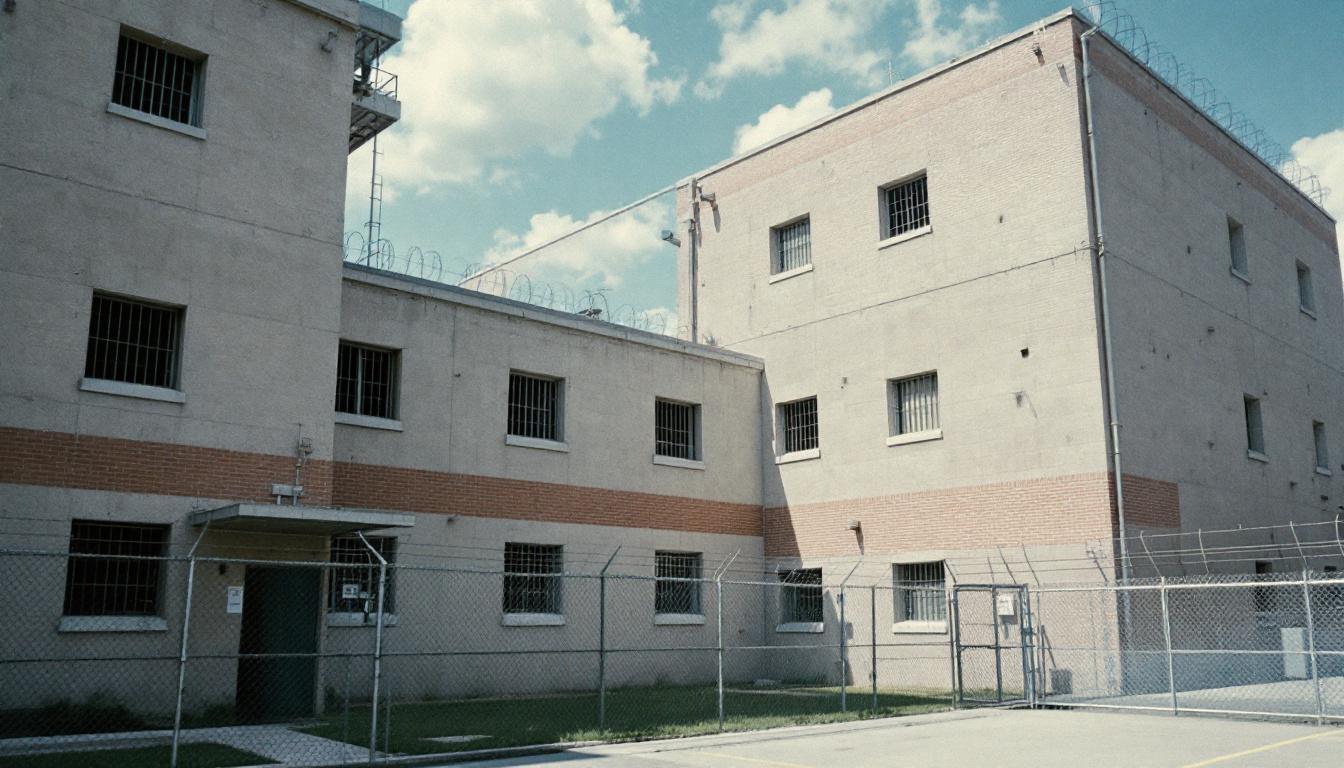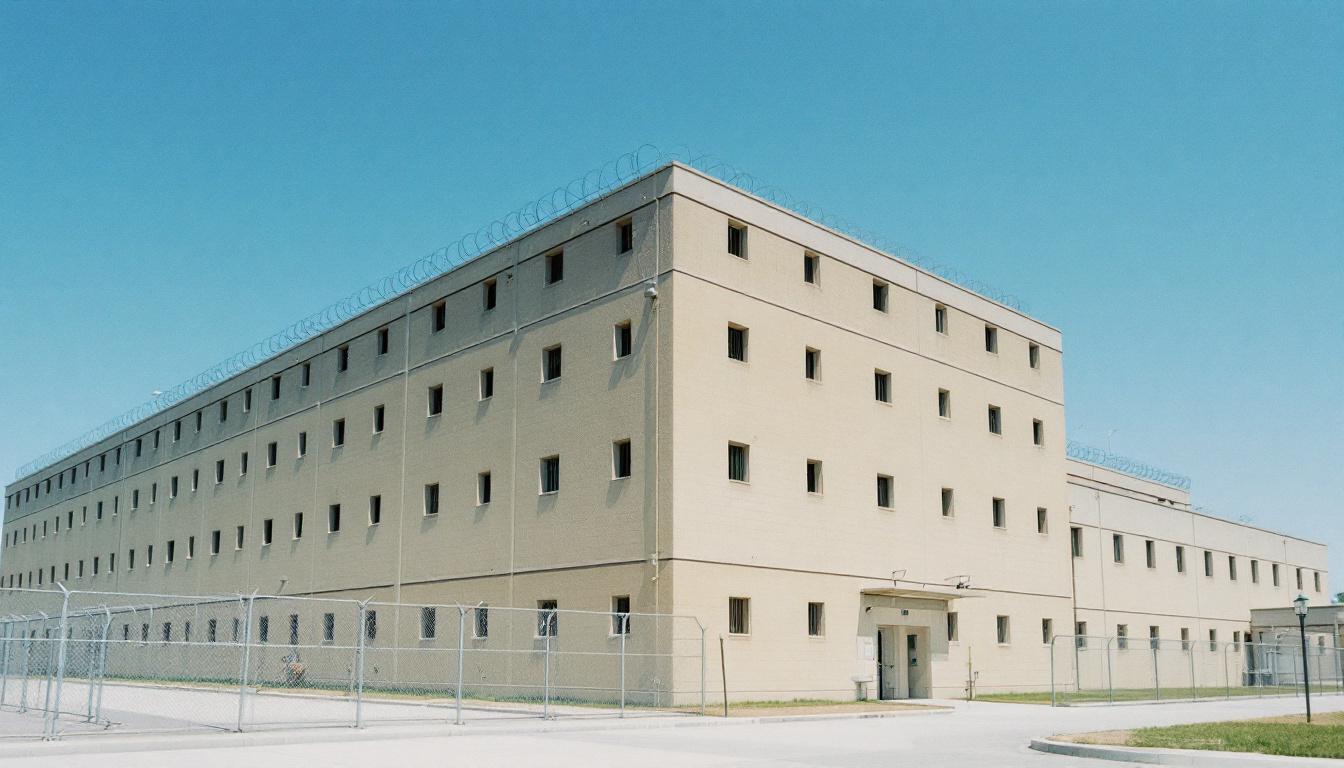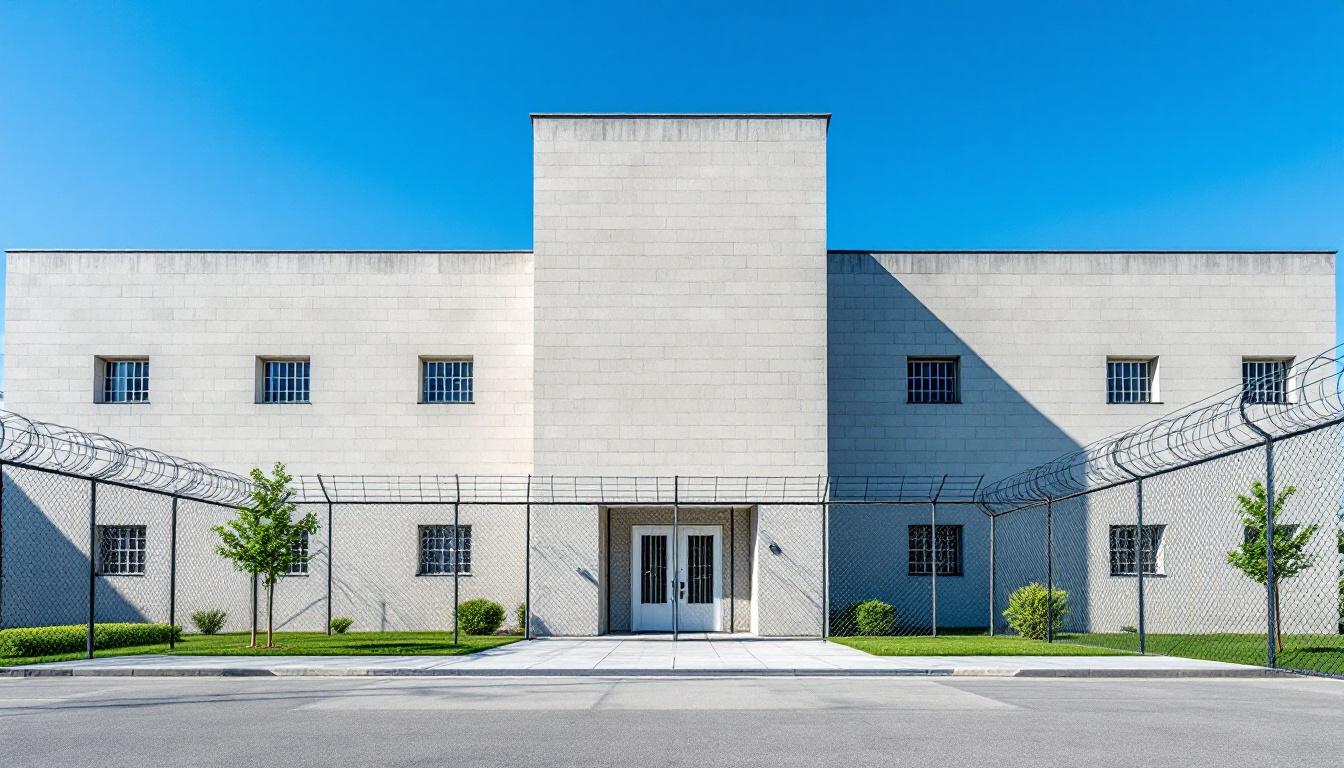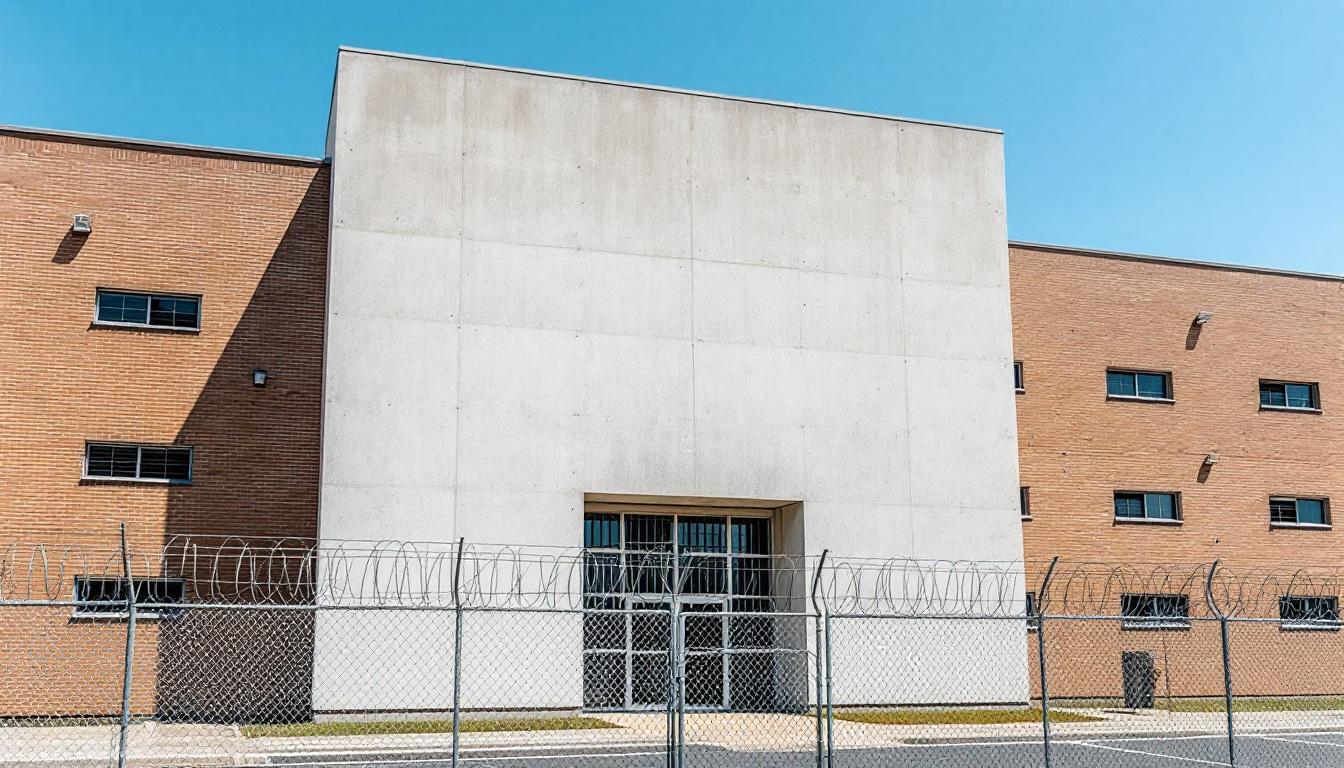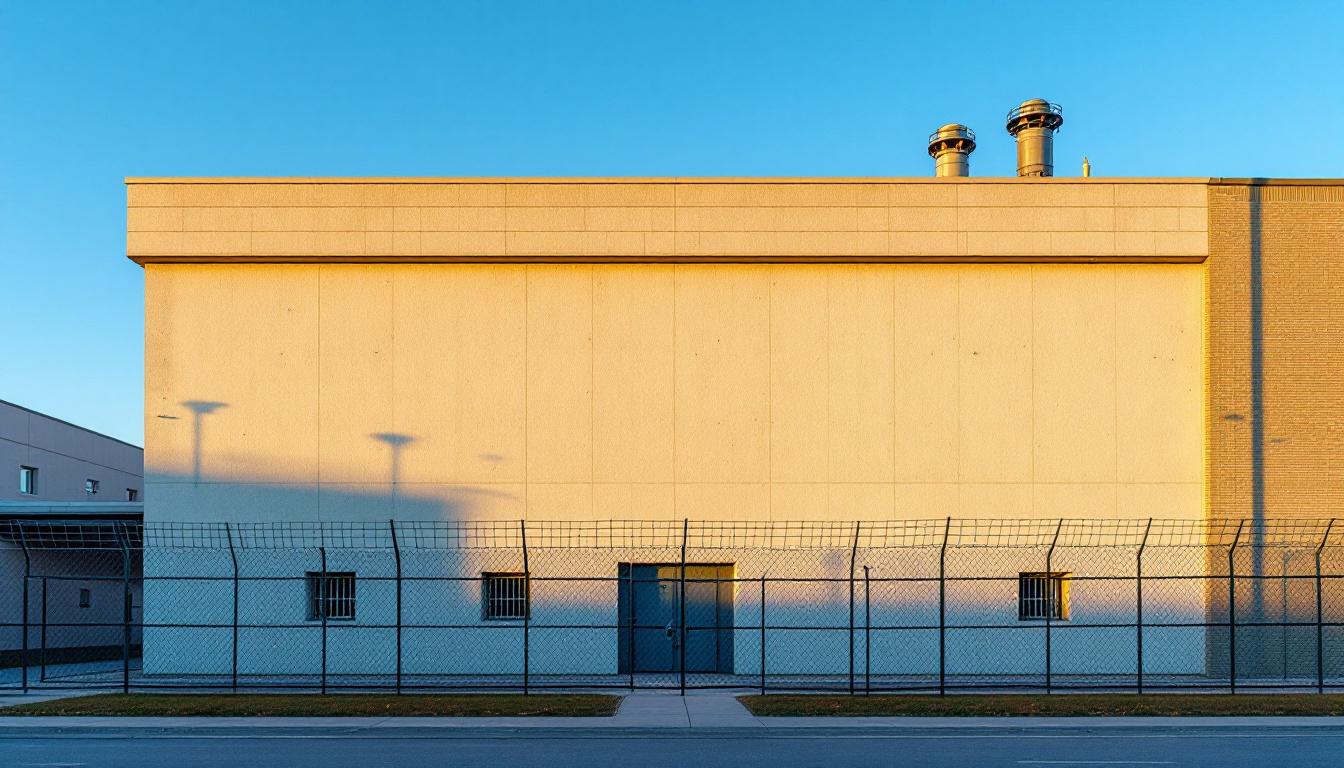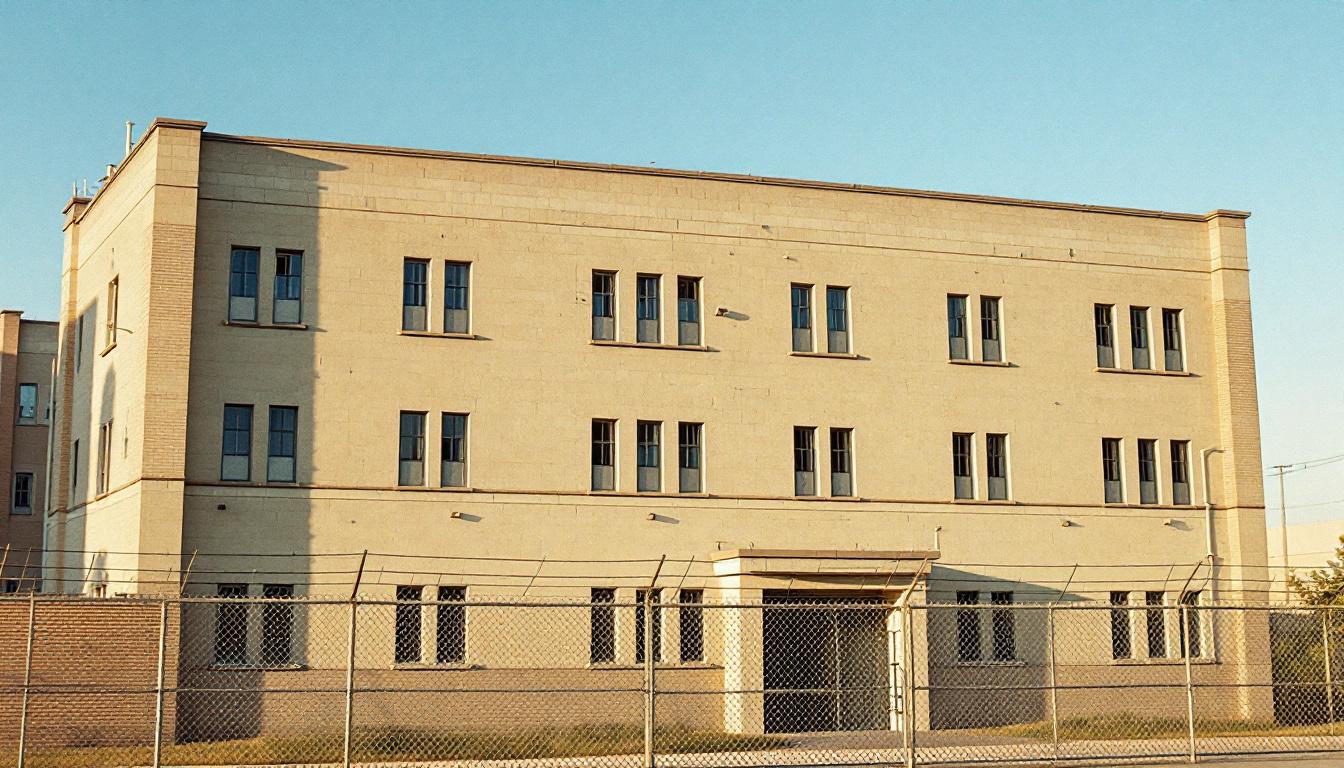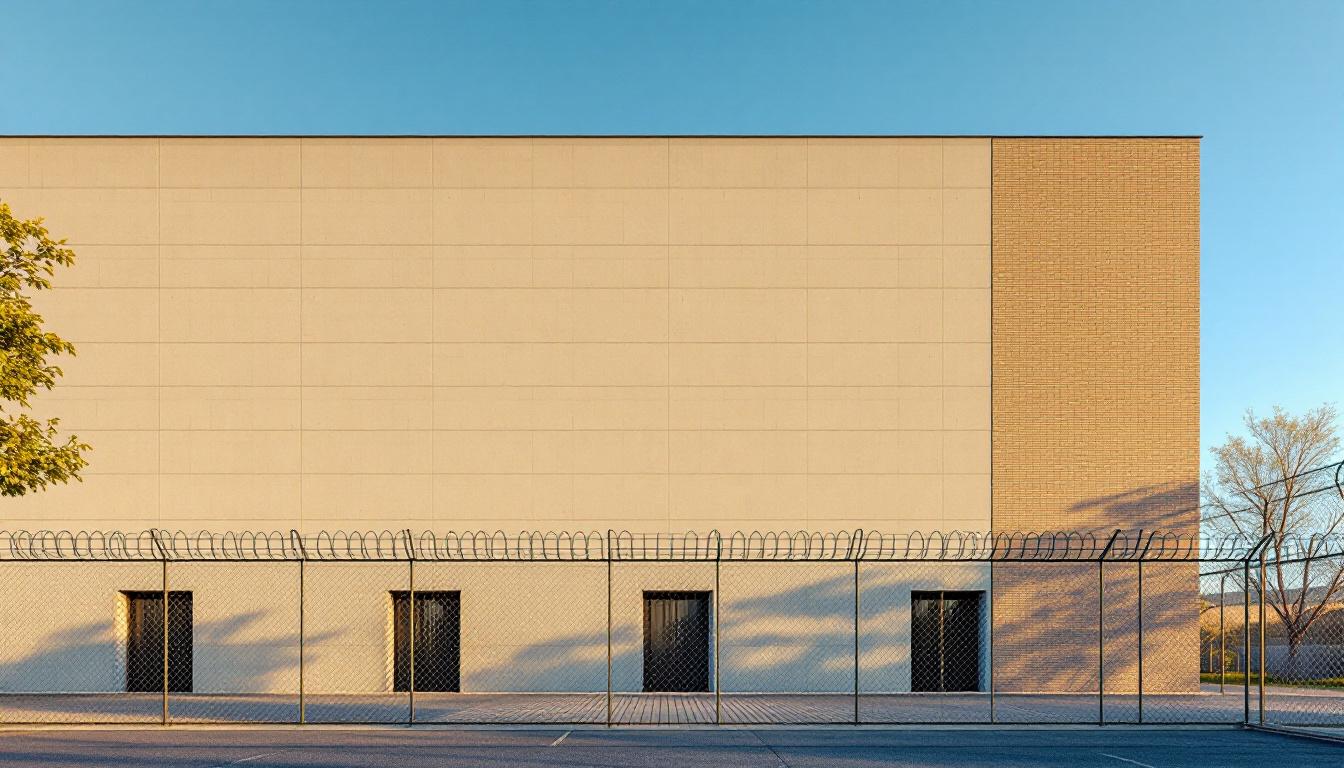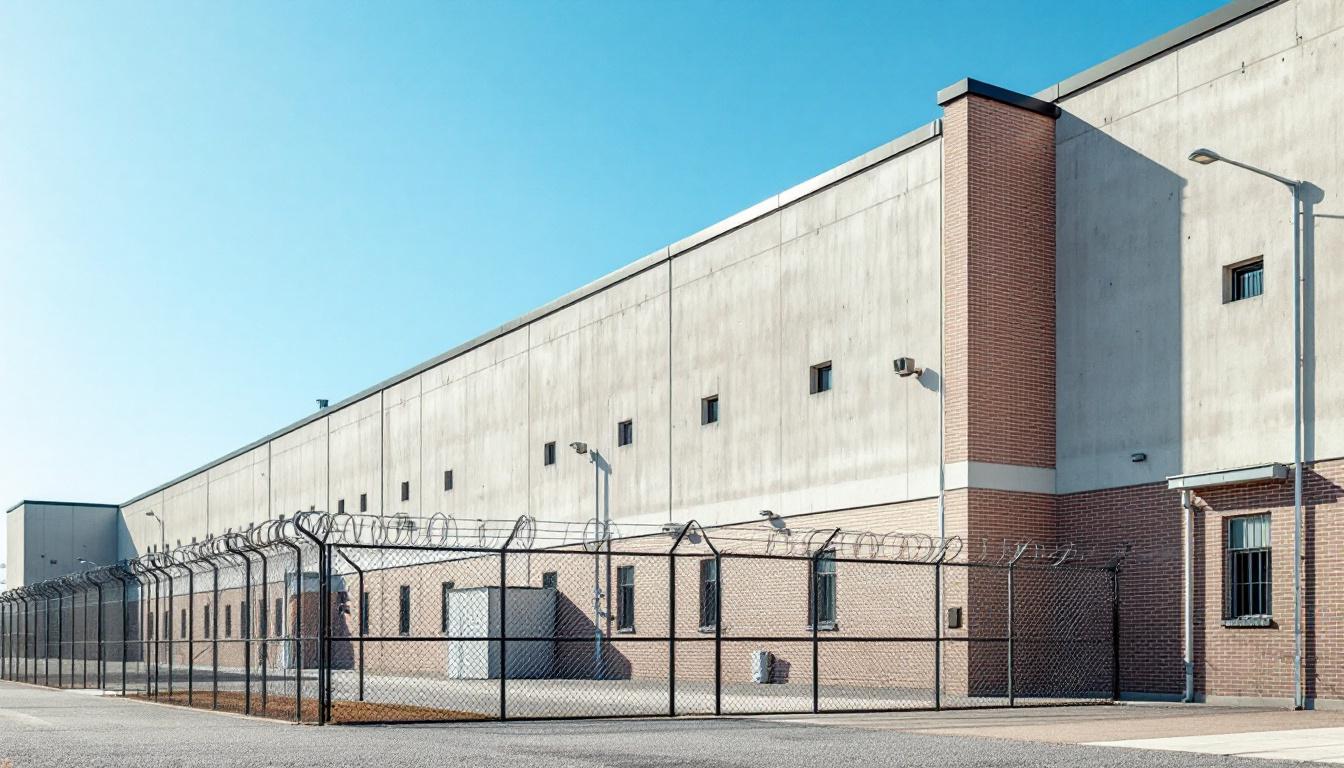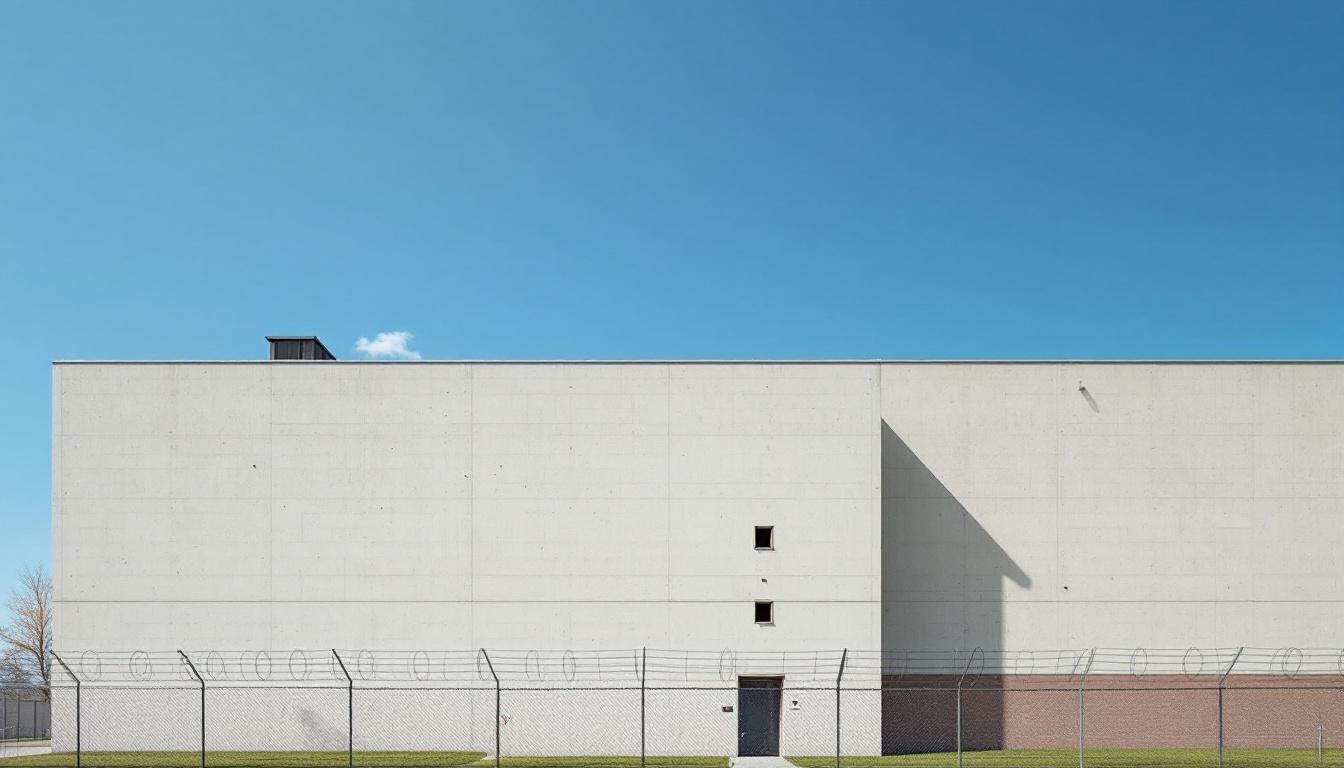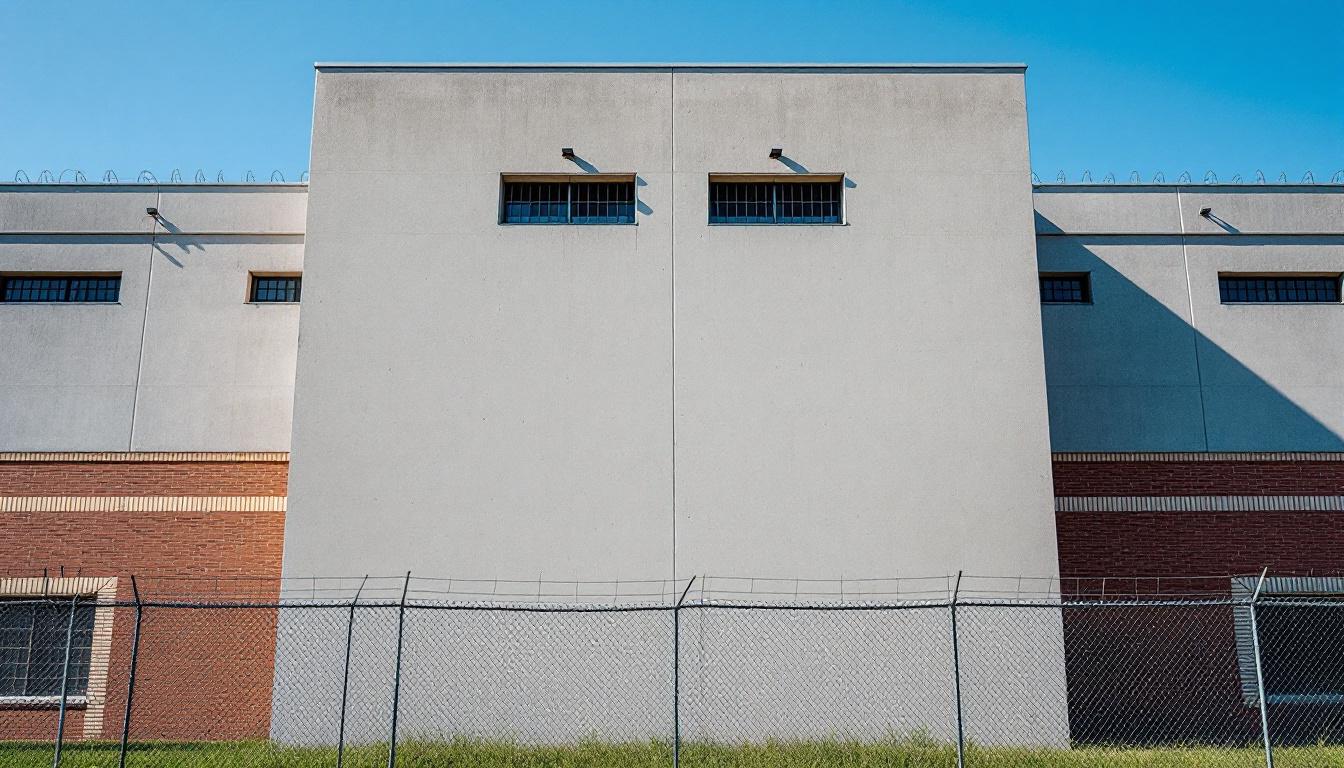
Quick Navigation
How to contact an inmate at Clarinda Correctional Facility
This comprehensive guide will walk you through how to connect with an inmate at Clarinda Correctional Facility. Follow the steps below to find an inmate and send letters and photos:
- Search for the inmate using our search tool below
- Create your account or log in to Penmate
- Write your message (up to 6,000 characters)
- Send instantly - inmates receive printed copies daily
Find an Inmate
Search for an inmate to start communicating today
Tip: You can search by first name, last name, or inmate ID number
To contact a person at Clarinda Correctional Facility start by searching for the person on the official facility website. Perform a search by following these steps:
- Step 1: Enter their first name and last name into the search form and click "Search"
- Step 2: Locate their inmate record
- Step 3: Write down their Inmate ID and any housing information provided
Important! Be sure to enter the person's full name. Nicknames should not be used.
How to Send Messages to Inmates

You can use your phone or computer to send emails, letters, and photos to an inmate. Messages are sent electronically to inmate tablets or kiosks at the facility. If you would like to send a message, start by searching for an inmate at Clarinda Correctional Facility.
Sending Photos and Postcards

A great way to send love and support to a loved one at Clarinda Correctional Facility is to send photos and postcards. It only takes a few minutes to send photos from your phone and it makes a huge difference. You can also mail postcards with words of support and inspiration, or design your own postcard for special moments like birthdays and holidays.
Important! Be sure not to send any explicit photos or they may not be approved by the facility. You can also use a photo printing app like Penmate to make sure your photos are printed at the correct size (4x6 or 3x5) and are mailed according to the rules and regulations of Clarinda Correctional Facility.
Frequently asked questions about Clarinda Correctional Facility
-
How long does it take to deliver a message?
If you're sending an email message your letter is usually delivered within 24-48 hours. For messages sent via mail you should expect delivery within 3-7 days. All messages will need be approved by Clarinda Correctional Facility.
-
How much does it cost to send a message to Clarinda Correctional Facility?
You can send a message free using your phone or mail a message via USPS for the price of a $0.60 stamp and envelope. You can also purchase credits or e-stamps from services starting at $1.99.
-
What services can I use to contact an inmate at Clarinda Correctional Facility?
Penmate
You can use Penmate to send letters and photos to an inmate from your phone. It's an easy way to stay in touch during your loved one's incarceration. Use the inmate locator to find an inmate's location and contact information, then you can send messages within a few minutes.
Securus messaging
Securus may be another option for communicating with an inmate at Clarinda Correctional Facility. You can create a friends and family account and purchase credits to send messages. All messages will be reviewed and must be approved by the facility.
JPay
Some county jails and state prisons may support sending messages with JPay. You must register an account with the system, find your loved one, and purchase stamps to send messages. For some locations you can also attach photos.
Smart Jail Mail
You may also check if Smart Jail Mail is available at Clarinda Correctional Facility. Smart Jail Mail is operated by Smart Communications and has contracted with some state and county jails. After purchasing credits, your messages and photos are sent to the facility, printed out, and then handed out to your loved one.
-
What is the mailing address of Clarinda Correctional Facility?
Mailing address:
Clarinda Correctional Facility
2000 N 16th St
Clarinda, IA 51632
Phone: (712) 695-7140Business hours:
- Monday: 8:00 AM – 4:30 PM
- Tuesday: 8:00 AM – 4:30 PM
- Wednesday: 8:00 AM – 4:30 PM
- Thursday: 8:00 AM – 4:30 PM
- Friday: 8:00 AM – 4:30 PM
- Saturday: Closed
- Sunday: Closed
-
What are the visiting hours at Clarinda Correctional Facility?
Visiting hours at Clarinda Correctional Facility vary by housing unit and security level. Generally, visits are scheduled on weekends and holidays, with some facilities offering weekday visits. Contact the facility directly at (712) 695-7140 or check their website for the current visiting schedule. Visits typically last 30-60 minutes and must be scheduled in advance.
-
What items are prohibited when sending mail to Clarinda Correctional Facility?
Prohibited items typically include: cash, personal checks, stamps, stickers, glitter, glue, tape, staples, paperclips, polaroid photos, musical or blank greeting cards, hardcover books, magazines with staples, and any items containing metal or electronics. Only send letters on plain white paper with blue or black ink. Photos must be printed on regular photo paper (no Polaroids). Always check with Clarinda Correctional Facility for their specific mail policies.
-
How do I send money to an inmate at Clarinda Correctional Facility?
You can send money to an inmate at Clarinda Correctional Facility through several methods: 1) Online using JPay, Access Corrections, or the facility's approved vendor, 2) Money orders mailed directly to the facility with the inmate's name and ID number, 3) Kiosks located in the facility lobby, or 4) Over the phone using a credit or debit card. Fees vary by method, typically ranging from $2.95 to $11.95 per transaction.
-
Can I schedule a video visit with an inmate at Clarinda Correctional Facility?
Many facilities now offer video visitation as an alternative to in-person visits. At Clarinda Correctional Facility, video visits may be available through services like Penmate, Securus Video Connect, GTL, or ICSolutions. Video visits typically cost $10-20 for 20-30 minutes and must be scheduled in advance. You'll need a computer or smartphone with a camera and reliable internet connection. Contact the facility for their specific video visitation policies and approved vendors.
-
What identification do I need to visit an inmate at Clarinda Correctional Facility?
All visitors must present valid government-issued photo identification such as a driver's license, state ID, passport, or military ID. Minors must be accompanied by a parent or legal guardian who can provide the minor's birth certificate. Some facilities require visitors to be on the inmate's approved visitation list, which may require a background check. Contact Clarinda Correctional Facility for specific ID requirements and visitor approval procedures.
-
How can I find out an inmate's release date?
To find an inmate's release date at Clarinda Correctional Facility, you can: 1) Use the online inmate search tool if available, 2) Call the facility's records department, 3) Contact the inmate's case manager or counselor, or 4) Have the inmate provide this information during a call or visit. For privacy reasons, some facilities only release this information to immediate family members.
Facility Overview
Contact Information
Clarinda Correctional Facility2000 N 16th St
Clarinda, IA 51632
Phone: (712) 695-7140
Official Website

About Clarinda Correctional Facility
Correctional facilities across the Midwest serve as integral components of state justice systems, and within Iowa's network of institutions, each facility typically addresses specific population needs while maintaining connections to surrounding communities. Located in Las Vegas, Iowa, Clarinda Correctional Facility operates as part of this broader regional framework, providing structured programming and services designed to support both incarcerated individuals and their families throughout the correctional process.
The facility's position in southwestern Iowa places it within a rural setting that often influences both operational approaches and community relationships. Las Vegas, IA may offer a quieter environment compared to urban correctional settings, which can create opportunities for different types of programming and family engagement. Clarinda Correctional Facility generally focuses on rehabilitation efforts that may include educational opportunities, vocational training, and behavioral programming, though specific offerings typically vary based on population needs and available resources. The population services at this IA correctional facility often encompass case management, mental health support, and reentry preparation designed to help individuals transition back to their communities.
As part of Iowa's correctional network, the facility typically coordinates with other state institutions and community organizations to ensure continuity of care and support. This regional approach often emphasizes maintaining family connections and community ties, recognizing that successful reintegration frequently depends on strong support systems. The facility's rural location may present both unique challenges and opportunities in terms of staffing, programming delivery, and family visitation, factors that correctional administrators generally consider when developing policies and procedures that serve both security needs and rehabilitation goals.
Programs & Services
Through comprehensive support services, the population at Clarinda Correctional Facility receives assistance designed to address multiple aspects of personal development and successful reintegration. The facility's approach typically emphasizes building practical skills while addressing underlying challenges that may have contributed to incarceration. These programs often focus on creating pathways for individuals to develop both personal and professional capabilities that will serve them upon release.
Educational services form a cornerstone of the supportive programming available to participants. The facility may supply basic literacy instruction, GED preparation, and continuing education opportunities that help individuals complete their academic goals. In addition to this, vocational programs provide hands-on training in various trades and technical skills. Specialized vocational offerings often include barbering and cosmetology programs, which can lead to licensure opportunities and viable career paths in the community.
Mental health services deliver essential therapeutic support to address psychological and emotional needs within the population. These programs typically include individual counseling, group therapy sessions, and specialized treatment for substance abuse issues. Communication skills training often complements these therapeutic services, helping participants develop better interpersonal abilities and conflict resolution techniques. Together, these support services work to strengthen family connections and prepare individuals for meaningful community reintegration by addressing both practical needs and personal growth opportunities.
Daily Life & Visitation

Systematic organization shapes every aspect of the experience for the population, with structured schedules that actively govern movement and activities throughout each day. At present, residents typically follow established routines that include designated times for meals, work assignments, recreational activities, and programming. Count procedures occur at regular intervals to maintain accountability, while the population moves between different areas of the facility according to predetermined schedules that supply predictability and order to daily life.
Housing units generally accommodate multiple residents in dormitory-style or cell configurations, with personal property allowances that may include approved clothing, hygiene items, and limited personal effects. The population typically receives three meals daily in designated dining areas, with menu rotations that aim to provide balanced nutrition. In addition to this basic structure, commissary services usually allow residents to purchase additional food items and personal care products, subject to spending limits and approved item lists.
Work assignments supply meaningful structure for much of the population, with opportunities that may include kitchen duties, maintenance tasks, laundry operations, and facility cleaning responsibilities. Despite this focus on work programs, recreational activities typically include access to television areas, library services, and outdoor exercise periods when weather permits. Programming schedules often encompass educational classes, substance abuse treatment, and life skills training that residents may participate in based on their individual needs and facility capacity. Visitation policies generally allow approved family members and friends to maintain contact through scheduled visits, while telephone and correspondence privileges provide additional communication options that help sustain important relationships during incarceration.
Ready to Connect?
Start communicating with your loved one today
Search for an Inmate
